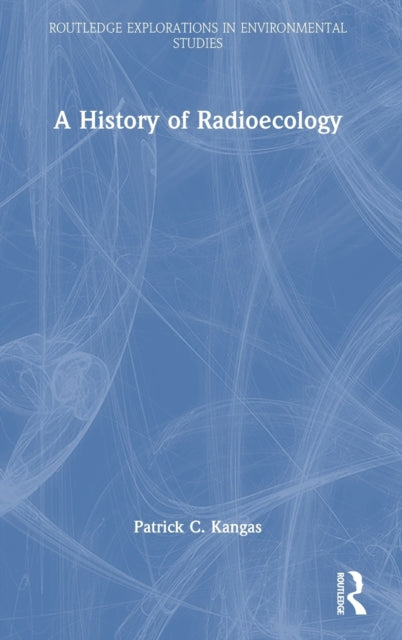Patrick C. Kangas
A History of Radioecology
A History of Radioecology
YOU SAVE £6.24
- Condition: Brand new
- UK Delivery times: Usually arrives within 2 - 3 working days
- UK Shipping: Fee starts at £2.39. Subject to product weight & dimension
Bulk ordering. Want 15 or more copies? Get a personalised quote and bigger discounts. Learn more about bulk orders.
Couldn't load pickup availability
- More about A History of Radioecology
This book provides a history of radioecology, reviews the ecological research supported by the Atomic Energy Commission (AEC) of the United States government, and discusses its implications. It is of interest to students and scholars of radioecology, environmental pollution, environmental technology, bioscience, and environmental history.
Format: Hardback
Length: 228 pages
Publication date: 26 December 2022
Publisher: Taylor & Francis Ltd
Radioecology: A Historical Journey
Radioecology, a captivating field of study, traces its roots back to the tumultuous years of World War II and extends its reach into the critical years of the Cold War. This comprehensive review, meticulously synthesized and thoughtfully discussed, delves into the profound implications of the ecological research supported by the Atomic Energy Commission (AEC) of the United States government. Spanning from the Second World War to the early 1970s, this research has left an indelible mark on the understanding of environmental pollution, environmental technology, bioscience, and environmental history.
The historical context provided in this review is essential in understanding the significance of the AEC's ecological research. During World War II, the United States faced the daunting challenge of developing nuclear weapons, which required a thorough understanding of the environmental impact of radiation. The AEC, established in 1946, played a pivotal role in addressing this critical need. Through its research programs, the AEC sought to unravel the complex ecological mechanisms that were affected by radiation, including its effects on plants, animals, and ecosystems.
One of the key achievements of the AEC's ecological research was the development of the Radiation Effects Research Foundation (RERF). Established in 1947, the RERF was a multidisciplinary research organization dedicated to studying the long-term effects of radiation on living organisms. The RERF's research encompassed a wide range of topics, from the effects of radiation on genetics and reproduction to its impact on the environment and human health.
The AEC's ecological research also played a crucial role in understanding the effects of nuclear accidents and spills. In the aftermath of the 1986 Chornobyl disaster, for instance, the AEC's research provided valuable insights into the extent of radiation contamination and the long-term health risks associated with exposure to radiation. This research helped shape international regulations and standards for nuclear safety and radiation protection.
In addition to its research programs, the AEC also supported a network of ecological monitoring stations and research laboratories across the United States. These facilities allowed scientists to collect data and monitor environmental conditions in real-time, providing valuable insights into the effects of pollution and other environmental stressors.
The implications of the AEC's ecological research are far-reaching and have had a profound impact on the field of environmental science. The AEC's research has helped to establish the scientific basis for understanding the effects of radiation on living organisms and has contributed to the development of environmental regulations and policies. Moreover, the AEC's research has inspired generations of scientists and researchers to pursue careers in environmental science and has contributed to the advancement of our understanding of the complex interactions between the environment and human health.
In conclusion, radioecology: A Historical Journey provides a comprehensive and insightful review of the ecological research supported by the AEC of the United States government. This review, spanning from World War II to the early 1970s, explores the profound implications of this research on environmental pollution, environmental technology, bioscience, and environmental history. The AEC's research has left an indelible mark on the field and has helped to shape our understanding of the complex interactions between the environment and human health. This review will be of great interest to students and scholars of radioecology, environmental pollution, environmental technology, bioscience, and environmental history.
Weight: 603g
Dimension: 234 x 156 (mm)
ISBN-13: 9781032257631
This item can be found in:
UK and International shipping information
UK and International shipping information
UK Delivery and returns information:
- Delivery within 2 - 3 days when ordering in the UK.
- Shipping fee for UK customers from £2.39. Fully tracked shipping service available.
- Returns policy: Return within 30 days of receipt for full refund.
International deliveries:
Shulph Ink now ships to Australia, Belgium, Canada, France, Germany, Ireland, Italy, India, Luxembourg Saudi Arabia, Singapore, Spain, Netherlands, New Zealand, United Arab Emirates, United States of America.
- Delivery times: within 5 - 10 days for international orders.
- Shipping fee: charges vary for overseas orders. Only tracked services are available for most international orders. Some countries have untracked shipping options.
- Customs charges: If ordering to addresses outside the United Kingdom, you may or may not incur additional customs and duties fees during local delivery.


